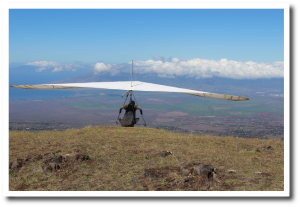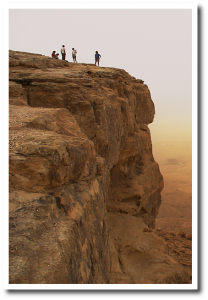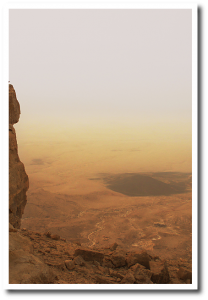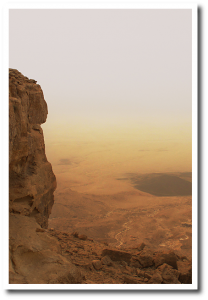The hang glider kept going and ran right off the edge of the cliff. He disappeared out of sight only to appear a little while later soaring up into the sky.
While it is a good idea for the hang glider to routinely go running beyond the edge of the cliff, it is not a good idea in your yoga practice. Every yoga pose has an edge. You need to find this edge and work with it rather than going beyond it.
What is your Edge
The Edge is the healthy limit of your body’s flexibility. It is that place where you stretch your muscles to their maximum extent and you are able to hold there comfortably. It is a challenging but comfortable place to be.
There are three places you can be when you are working with your Edge in a yoga pose, just like the cliff edge that the hang glider ran off of.
- Staying away from your Edge
- Going beyond your Edge
- At your Edge
The easiest place to be is away from the Edge, but you get the least benefit there.
1 – Staying away from your edge
If you stay away from the Edge and do not come close to it you are feeling completely relaxed. While there is little possibility of injury in this position there is no increase in flexibility either. You are not stretching your muscles to their limit and challenging them to lengthen.
This is a very comfortable place to be but no improvement is happening, unlike going beyond your Edge which is a very dangerous place.
2 – Going beyond your edge
If you go beyond your Edge then tension and pain starts to build in your body and you can possibly injure yourself. It now becomes an uncomfortable place to be and you do not want to stay in the stretch for very long.
Your muscles become very tense in an attempt to protect themselves from injury. Rather than lengthening and stretching your muscles are contracting.
Approaching your Edge carefully is the best approach and there are a lot of benefits to staying at your Edge.
3 – Being at your Edge
When you find your Edge in a yoga pose and hold yourself there, you are applying the maximum safe amount of stress to your muscles. This will cause your muscles to stretch and lengthen safely without injury to them.
What do you do with your Edge
Once you move to your Edge in a particular yoga pose you start to work with your breath to increase your flexibility.
With each inhale you move slowly back from your Edge and with each exhale you move slowly towards your Edge. Each time you approach your Edge with caution and pay attention to the feedback from your body. Your body will tell you when you can move a little bit deeper in to the pose.
As you breathe in and out and move slightly away from and towards your Edge you may notice that you have gone slightly further into the pose.
Staying at your Edge allows the tension to release from your muscles and gives them a chance to lengthen.
This is not the only time that your Edge moves. Sometimes you will be surprised when you enter a yoga pose. You discover that your Edge is in a different place.
But my Edge moved
The interesting thing about your Edge is that it moves. Gradually over time the longer you hold yourself at the Edge in a yoga pose and work with your breath you will become slightly more flexible and your Edge will have moved a little further away.
Sometimes you will discover that your Edge is not as far into a pose as it usually is. Some tension has developed in your muscles due to some other activity or lack of activity. You have lost some flexibility and become stiffer. You will be working with this new Edge to recover the lost ground.
At other times you will discover that your Edge has moved further into the pose. This is a much rarer event. Accept the gift and work with your new Edge and continuing stretching and lengthening your muscles.
Summary
Unlike the hang glider it is better for you to not go beyond your Edge and jump off the cliff.
Finding your Edge and learning to work with requires some practice and listening to the feedback from your body.
Staying away from your Edge is safe but no progress will be made in increasing your flexibility.
Going beyond your Edge will get you further into your pose but you will injure yourself and then you will have to limit your yoga practice until your body heals.
Next Step
Ask your yoga teacher to help you find your Edge. Once you find your Edge your teacher can show you how to work with your breath to move your Edge gradually deeper into your pose.
Additional Reading
— For an example of using your Edge in action read Why you should avoid the Volcano Zone in your yoga practice.
— For another view on your Edge read Goldilocks and the three bears find the Edge
— You can use your breath to find out where you are relative to your Edge. How to use the Steam Engine to find your Edge tells you more about this.
— The breath is an important part to working with your Edge. Read How the Ujjayi breath improves your yoga practice to find out more about your breath and your yoga practice.







